The Waterlust sailing canoe designed by Dillon Majoros of Chesapeake Light Craft (CLC) is a 17′ decked sailing canoe designed for “high-performance expedition cruising.” It was developed in 2016 in partnership with Waterlust, a group of environmentally focused scientists, for a journey along the Intracoastal Waterway. It has a choice of rigs, and the option of a Hobie MirageDrive for auxiliary power.I fell in love with the graceful sheer and reasoned that the boat was not so big, and I would not have invested too much time, money, and energy if I found out that either I was not the boatbuilder I had hoped I might be, or that the boat was not right for me. The boat did turn out to be the right one, and the sheer still gets me every time.The boat is available as either kit or plans from CLC or their partners around the globe, as part of their Pro-Kits range, which is aimed at people who have some degree of competence with epoxy-plywood construction. I sourced my kit and instruction booklet from Fyne Boat Kits in the U.K. The kit contained precut plywood parts, resin, ’glass, and most of the hardwood required machined to the right dimensions, with precut puzzle joints—just what a builder needs to make rapid progress. Sails and hardware can also be provided, although I sourced mine elsewhere. This was my first build, but it went together very easily, and the 28-page instruction booklet is well illustrated, clear, and easy to follow. The few questions that I had were quickly addressed either by Fyne or CLC.
Join The Conversation
We welcome your comments about this article. To include a photo with your remarks, click Choose File below the Comment box.

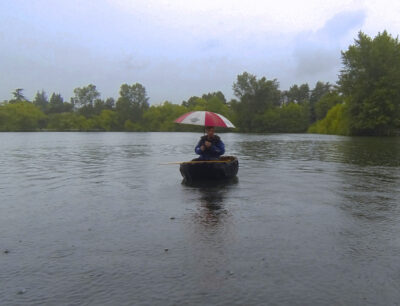


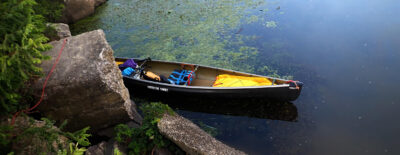
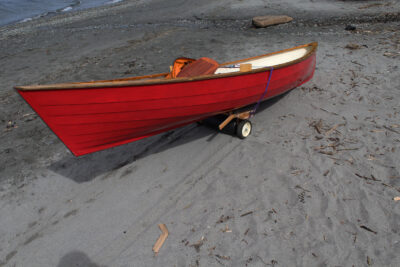
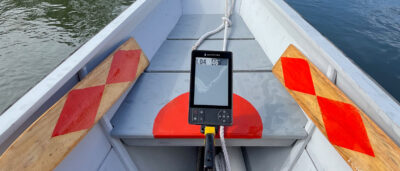
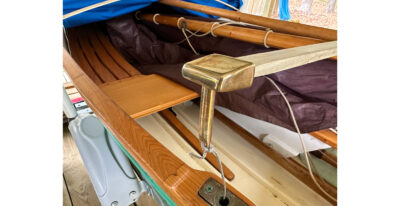
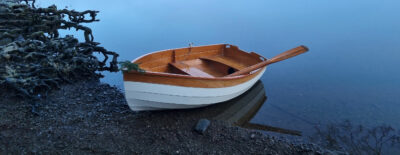
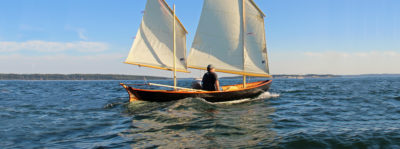

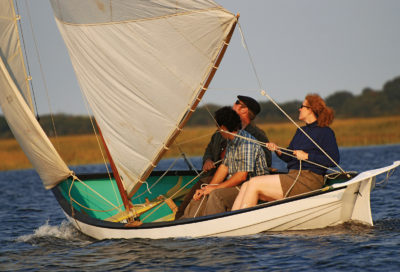

I have a Waterlust without amas and I find it great fun to sail sitting on the side deck with toes under the opposite deck, hiking. I can do this in 18 knots or so going to windward with reduced sail. Downwind in a breeze is far more challenging as it is so narrow. I tack downwind to avoid the rolling effect dead downwind. I only use the wicker seat when using the pedal drive.
A very adaptable fun craft that sounds even more flexible with the amas.
Being a gent of advancing years, I found the Waterlust a little too lively for me; and my cruising area – The Norfolk Broads, UK – (narrow tree-lined rivers and lakes), were not conducive to the use of outriggers.
Consequently, I reduced the size of the mainsail and replaced the lightweight plywood daggerboard with a 8mm steel one (detailed in my book).
The result is a wonderfully stable cruising vessel in which I have sailed calmly in 20 knots of wind without hiking out and slept on in safety and comfort during a 5-day trip to Holland last year. This is a truly versatile vessel whose looks draw admiring crowds wherever she sails.
I’m in the process of building a Waterlust canoe. (Mine is number 30} I bought the out rigger package and started the build by working on them first, as a refresher in stitch-and-glue construction. I have the book “Building a Waterlust Sailing Canoe”, and refer to it often. The builder’s blogs are also a great resource as is the youTube channel by the guy who built one in Germany during covid.
I’m looking forward to getting out and exploring some great inland waterways with this boat.